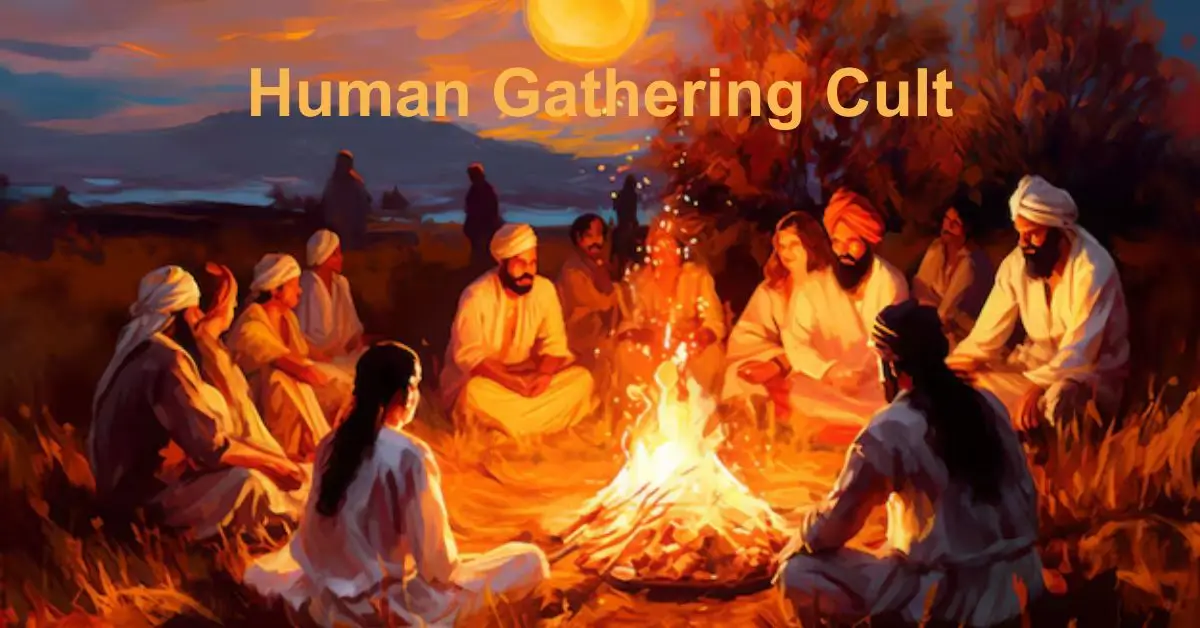In the tapestry of human history, cults have always intrigued and terrified, with their rituals and beliefs often hidden in secrecy. Among them, “human gathering cults” present a particularly enigmatic phenomenon. Defined by their emphasis on collective human energy, spiritual alignment, and often apocalyptic visions, these cults thrive in the intersection of mysticism and societal disillusionment.
Origins of Human Gathering Cults
The concept of human gathering cults is rooted in ancient rituals where community gatherings were believed to summon spiritual or cosmic forces. In indigenous traditions, tribal dances, group prayers, and mass offerings symbolized unity and strength. Modern iterations of these cults, however, have morphed into movements often characterized by charismatic leaders, closed communities, and heightened ideological fervor.
The rise of human gathering cults can be traced back to the 20th century, coinciding with widespread existential crises brought on by global wars, environmental degradation, and technological isolation. Cults like the infamous Heaven’s Gate or Aum Shinrikyo exploited collective fears and promised salvation through unity and obedience.
Core Beliefs and Practices
At their core, human gathering cults revolve around the idea that group energy can channel divine power or transcendental awakening. While each cult has its own unique doctrine, several common themes emerge:
- Apocalyptic Visions: Many believe in an impending cataclysm that only the “gathered” can survive.
- Collective Salvation: Followers are often taught that salvation lies in surrendering individuality to the collective.
- Ritualistic Gatherings: Regular mass meetings, chants, or meditations aim to harness the “energy of the human soul.”
- Charismatic Leadership: A central figure—regarded as a prophet, guru, or divine entity—commands absolute devotion.
Some human gathering cults are relatively benign, focusing on spiritual growth and community bonding. Others, however, have descended into violence or mass suicides, as seen in the tragedies of Jonestown and Heaven’s Gate.
The Psychology of Belonging
Why do people join such cults? The appeal lies in their ability to provide:
- A Sense of Purpose: In a chaotic world, cults offer clarity and a defined path.
- Community: Isolation is a major driver, and cults foster belonging.
- Answers to Existential Questions: Through doctrine, they attempt to answer life’s biggest mysteries.
Psychologists argue that individuals who feel disenfranchised or spiritually adrift are particularly vulnerable to the allure of human gathering cults.
Controversies and Legal Challenges
Human gathering cults often attract criticism for their opaque operations and, at times, abusive practices. Allegations of brainwashing, financial exploitation, and psychological manipulation are common. Governments worldwide struggle to address these groups without infringing on freedom of religion.
Modern-Day Variants
With the advent of the internet, cult dynamics have evolved. Online forums and social media have enabled virtual gatherings, allowing these groups to recruit followers globally. Notable examples include movements claiming to prepare for extraterrestrial encounters or global resets.
Conclusion
Human gathering cults are a testament to humanity’s need for connection and meaning, albeit channeled in sometimes dangerous ways. While they can foster community and spiritual exploration, their darker manifestations remind us of the importance of critical thinking and safeguarding individual freedoms. Understanding these cults’ dynamics is essential in ensuring that the search for belonging does not come at the cost of autonomy and safety.
As we move further into an era of uncertainty, the allure of such cults may only grow stronger, making it imperative for society to balance tolerance with vigilance.
FAQs
1. What is a human gathering cult?
A human gathering cult is a group or movement centered around collective human energy, spiritual unity, or apocalyptic beliefs. These cults often emphasize the power of mass gatherings, rituals, and the guidance of a charismatic leader to achieve salvation or enlightenment.
2. What are the key beliefs of human gathering cults?
While beliefs vary among cults, common themes include:
- The importance of collective spiritual or cosmic energy.
- Apocalyptic visions or the belief in an impending global event.
- The idea that surrendering individuality to the group ensures salvation.
- Absolute loyalty to a central leader or doctrine.
3. How do human gathering cults recruit followers?
Recruitment often happens through:
- Exploiting individuals’ feelings of isolation or purposelessness.
- Promising answers to life’s existential questions.
- Using social media, public events, or personal networks to spread their message.
- Offering a sense of belonging and community.
4. Are all human gathering cults dangerous?
Not all are inherently harmful. Some focus on spiritual growth, meditation, or community building. However, others can be dangerous, leading to psychological manipulation, financial exploitation, or even violent outcomes, as seen in infamous cases like Jonestown.
5. Why do people join human gathering cults?
People often join because they seek:
- A sense of purpose in life.
- Belonging to a community.
- Spiritual awakening or answers to existential dilemmas.
- Guidance during times of personal crisis or societal uncertainty.
6. How can someone identify a human gathering cult?
Warning signs include:
- A leader demanding absolute obedience and loyalty.
- Secrecy about practices or teachings.
- Pressure to cut ties with friends and family outside the group.
- Financial exploitation or mandatory donations.
- Claims of exclusive knowledge or salvation.
7. What are some historical examples of human gathering cults?
Notable examples include:
- Heaven’s Gate: Focused on extraterrestrial salvation through group suicide.
- Jonestown (People’s Temple): Ended in a mass suicide-murder in Guyana.
- Aum Shinrikyo: A Japanese cult responsible for the Tokyo subway sarin attack.
8. Are there legal actions against such cults?
Yes, governments monitor and sometimes take legal action against cults accused of:
- Psychological and financial exploitation.
- Illegal activities like fraud, abuse, or violence.
- Violations of human rights.
9. How do human gathering cults use the internet?
The internet has enabled these cults to:
- Recruit followers globally through social media and forums.
- Host virtual gatherings to spread their teachings.
- Target vulnerable individuals in online communities.
10. How can someone leave a human gathering cult?
Leaving can be challenging due to psychological manipulation or fear of retribution. Steps to leave include:
- Reaching out to trusted friends or family for support.
- Seeking professional counseling or exit counseling services.
- Avoiding contact with cult members to reduce pressure to return.
- Understanding that leaving is a process that takes time and resilience.
11. Can these cults be beneficial in any way?
In rare cases, human gathering cults provide a sense of community, emotional support, and spiritual exploration. However, the potential for abuse often outweighs these benefits.
12. What can society do to prevent the spread of harmful cults?
- Raise awareness about the psychological tactics cults use.
- Promote mental health support and community-building initiatives.
- Regulate organizations engaging in abusive or fraudulent activities.
- Encourage critical thinking and media literacy to help individuals recognize manipulative behavior.











